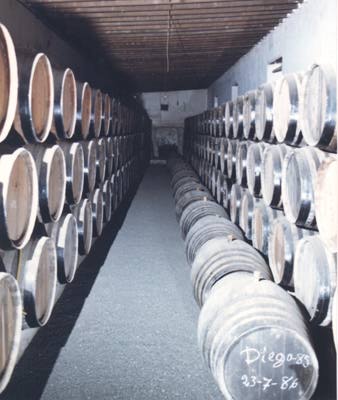Wines
Its certainly worth raising a glass to the ingenuity of the islands vineyard owners. What a strange system theyve devised for growing successful vines, but one whose produce is a delight to sample. The vines are planted in holes excavated in the islands volcanic rock. These holes are then refilled with picon, (volcanic ash) and, astonishingly, vines manage not only to grow, but to flourish. Vineyard owners open a series of pits in the ground, some three metres wide over as many hectares as the tortuous terrain allows.

They then dig a smaller hole in the centre of the pit for the roots of a single vine. When satisfied the vine has adequate room for growth, the farmers then cover the roots with soil and scatter picon around the plant. The entire surface of the pit is covered with picon which retains the morning dew and maintains the spongy texture of the soil below. One coating of picon, several centimetres thick, is enough to keep the vine supplied with adequate moisture for many years.
To enable the vine to produce an abundance of grapes, every pit must be surrounded, on its northerly side, by a low semi--circular dry stone wall. The wall shields the vine from the strong prevailing winds of the island, but also allows enough air to pass through its tiny holes and cracks for ventilation.
The remarkable dry stone walls of Lanzarotes main vine growing area, La Geria, have been praised throughout the world. A prestigious U.S. exhibition of photography gave an award for an exhibit, entitled Architecture without Architects, featuring the amazing landscape of the vineyards of La Geria. The wine from the island, like the grapes themselves, possesses a distinctive taste aromatic, heady and quite delicious with a resinous taste, almost of pine.

The Lanzarote vine is an "original" in the sense that it was never affected by phylloxera, the plague which devastated the vineyards of Europe more than a century ago. It has also avoided any "grafting" unlike European breeds and has consistently produced grapes of an extremely high quality like Malvasia, Moscatel and Diego.For a first tasting, the Semiseco wines make a good introduction to the Lanzarote flavour.
Locals say they are best served at room temperature rather than chilled, since cooling removes much of their aromatic properties. For a sharper, dryer taste, try the Seco, which is particularly good.
But according to the experts, the Vino Dulce, heavy sweet wines of the volcanic region, represent the true "nectar of the gods". Since the mediaeval period, the courts of Europe have been drinking "Canarian" in great quantities. Shakespeare, it appears, was a great admirer of the wine, and there are many references to Canarian wine in the plays, Henry IV Part I and II, and the Merry Wives of Windsor. Falstaff, one of the Bards most endearing characters, drank gallons of it. Indeed, in the Merry Wives of Windsor, the bearded quaffer was described as "given over to fornication, taverns, Canarian wine and the wind".